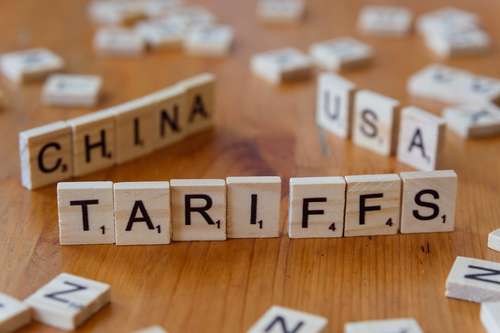Longevity in a political position is a rare feat. Yet, a few presidents have managed to hold onto the reins of their countries for decades.
With President Vladimir Putin of Russia’s recent re-election, he’s the latest to join this exclusive club of the world’s longest-serving presidents.
By the end of his new term, Putin will have ruled Russia for three decades, joining the league of political leaders with extended tenures.
In this article, we look at the ten longest-serving presidents in the world, examining their impact and the longevity of their rule.
Equatorial Guinea's Obiang Long-serving African Presidents: 44 Years

Teodoro Obiang Nguema of Equatorial Guinea | AfricaNews/YT
Teodoro Obiang Nguema came to power in a coup in Equatorial Guinea in 1979 when the Soviet Union was still intact. Now 81, Obiang has ruled for 44 years.
His rule has been filled with repressive tactics, which has earned Equatorial Guinea the nickname "North Korea of Africa." Under his long tenure, the country has faced criticism from the outside world for human rights abuses and lack of political freedom.
Cameroon's Biya: 41 Years

Paul Biya of Cameroon | Displore/YT
Paul Biya, at 90 years old, is the world's oldest elected leader. He has ruled Cameroon with an iron fist since November 1982.
He is known as "the Sphinx" for his inscrutable nature. It is alleged that Biya won his seventh consecutive term in 2018 through electoral fraud. His long rule has seen Cameroon through numerous challenges, including economic difficulties and internal conflicts.
Congo-Brazzaville's Sassou Nguesso: 39 Years

Dennis Sassou Nguesso of Congo | AfricaNews/YT
Denis Sassou Nguesso has led the Republic of Congo for 39 years. He first became president in 1979, lost power in 1992, and then returned in 1997 after a civil war. Since then, he has maintained a firm grip on power.
Sassou Nguesso has been in power for a long time and has worked to bring stability to the country after a civil war, but there have been allegations of corruption and authoritarianism during his rule.
Uganda's Museveni: 37 Years

Yoweri Museveni of Uganda | YT
Yoweri Museveni, now 79, has been Uganda's president for 37 years. In a widely contested election, he was re-elected for a sixth term in 2021.
Museveni's leadership began with promises of democracy and economic reform, but his tenure has been no less than authoritarian practices and suppression of opposition. His lengthy rule has deeply influenced Uganda's political and social systems.
Tajikistan's Rahmon: 31 Years

Emomali Rahmon of Tajikistan | a katz / Shutterstock.com
Emomali Rahmon, 71, has ruled Tajikistan for 31 years. He came to power after the collapse of the Soviet Union and has maintained tight control over the country since then.
Rahmon's presidency has seen Tajikistan through periods of instability and economic hardship. His tenure has also seen an increase in power centralization and political dissent suppression.
Eritrea's Afwerki: 30 Years

Isaias Afwerki of Eritrea | YT
Isaias Afwerki, 77, has been president of Eritrea since it gained independence from Ethiopia in 1993. Afwerki, a former rebel leader, has led the country for 30 years. His rule is characterized by strict authoritarian measures, and Eritrea is often described as one of the most repressive countries in the world.
Despite this, Afwerki has maintained his position through a combination of military control and political repression.
Belarus's Lukashenko: 29 Years

Alexander Lukashenko of Blarus | NBC
Alexander Lukashenko, 69, has been the president of Belarus for 29 years.
A close ally of Putin, Lukashenko has used Soviet-style repression to stay in power. His tenure has been filled with widespread allegations of election fraud and human rights abuses.
Despite international criticism, Lukashenko continues to rule Belarus with a firm hand while still maintaining a close relationship with Russia.
Djibouti's Guelleh: 24 Years

Ismail Omar Guelleh of Djibouti | YT
Ismail Omar Guelleh, 76, has been the president of Djibouti for 24 years. Re-elected for a fifth term in 2021, Guelleh has led the country, which styles itself as the "Dubai of Africa," through economic changes.
During his extended tenure, Djibouti has flourished as a significant hub for global trade; nonetheless, he continues to encounter criticism concerning the lack of political freedom and the state of human rights.
Russia's Putin: 24 Years

Valdimir Putin, Russia's President | Aynur Mammadov / Shutterstock
In Russia, 71-year-old Putin has been a leader since December 1999.
He became acting president in December 1999, then served two terms from 2000 to 2008 before swapping jobs with his prime minister Dmitry Medvedev to circumvent rules limiting consecutive presidential mandates to two, only to reclaim the role of Kremlin leader in 2012.
Term limits would have disqualified Putin from standing in the next election, but a controversial constitutional reform in 2020 allowed him to stay in power until at least 2036.
Rwanda's Kagame: 23 Years

Paul Kagame of Rwanda | lev radin / Shutterstock.com
Rwandan President Paul Kagame, a former Tutsi rebel leader who put an end to the genocide of Tutsis in 1994, has been president of the small central African republic since April 2000. Kagame’s long tenure is often cited as an example of both stability and authoritarianism.
The Pros and Cons of Long-Serving Leaders
As presidential terms grow shorter, some leaders go against this trend, devoting a significant portion of their careers to governing their countries. This commitment presents both advantages and obstacles.
Benefits of Long Tenure
Long-serving leaders can bring stability and consistent policies to their countries.
They have the time to implement long-term strategies and see their vision come to fruition. This can lead to significant economic development, improved infrastructure, and stronger international relations.
Challenges of Extended Rule
Over time, leaders who remain in power may lose touch with the needs of their people.
Their priorities often shift from serving their country to preserving their own legacy, which can result in corruption, human rights violations, and a lack of political freedom. Additionally, the long-term impact of these leaders on their nations' institutions often goes unnoticed.
They tend to become inseparable from their countries, making it challenging to distinguish their personal legacy from the nation's identity.
Consequently, when they eventually step down, this transition can present significant challenges, and the transfer of power may become uncertain or difficult.
Succession Planning
One of the best ways to manage the departure of a long-serving leader is through effective succession planning.
Without it, institutions will struggle to maintain stability and continuity. Ensuring a smooth transition of power is essential to preventing crises and maintaining public trust.
Conclusion
The world’s longest-serving leaders often leave different types of legacy on their countries, which ultimately will continue to shape how the country's political, economic, and social system works. While their extended tenures usually bring different challenges, such as fostering corruption and suppressing political freedoms, on the flip side, they can also bring stability and development.
The balance between maintaining power and serving the people's interests remains a delicate and complex issue for these leaders and their nations. The future of these countries will depend on how well they manage the transition of power and address the legacy left by these long-lasting presidents. Effective succession planning and a commitment to democratic principles will be important for a smooth change of government.




